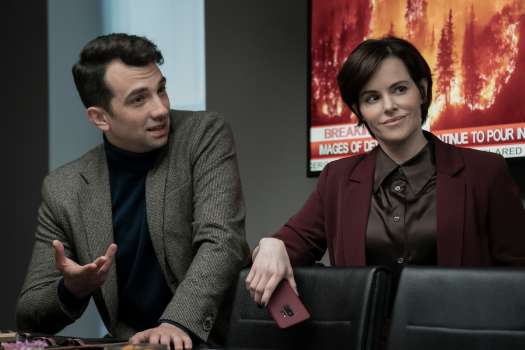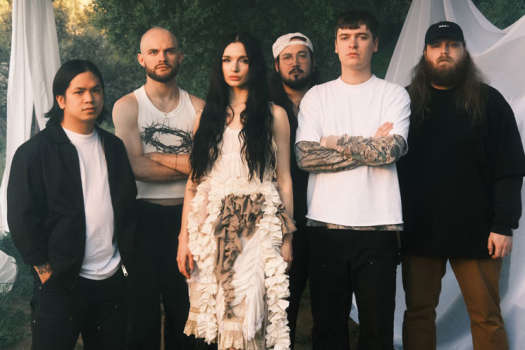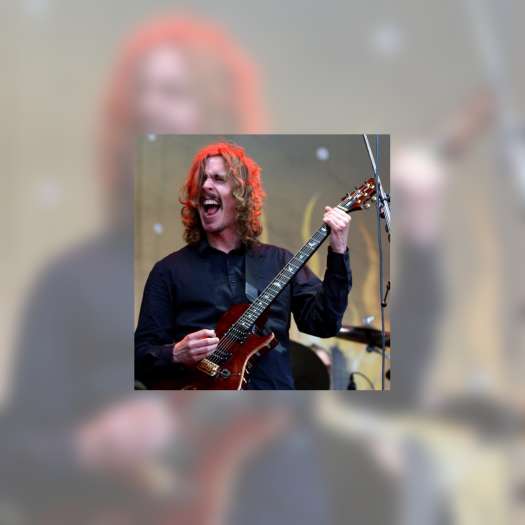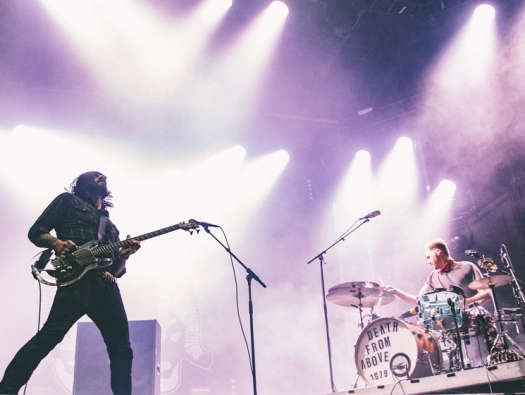Ask singer-songwriter Christine Fellows what she considers her primary instrument and she laughs. "I would automatically say that I dont play an instrument, she says. "Because I dont, really. I think of them as a way to write, like a pen. Theyre like an implement to write with. In my perfect world, I wouldnt have to play an instrument at all.
The Windsor-born performer may get her wish her latest project, a score for a forthcoming CTV documentary about Bigfoot called Theres Something Out There, uses only her multi-tracked voice.
But the number of instruments filling the home studio in the cosy Winnipeg house she shares with her husband, Weakerthans front-man John K. Samson, belies her modesty about her musical prowess.
There are a couple of ukuleles, a guitar, a banjo and a wide variety of keyboards, from an old upright piano Fellows bought for $200 at a Salvation Army store ("and then had to put, like, thousands of dollars into to make it go) to that perennial nursery favourite the rainbow-coloured Fisher-Price glockenspiel not to mention an accordion and a whack of Casios.
"I have a million of them, she says, professing her particular love for the Casio SK-1, "and I have to use them all.
In the corner of her studio is the Mac computer equipped with ProTools that shes been using for recording lately.
"Every time Ive recorded something in the past Ive used a different format, because it tricks you, leads you down different paths in the process, she says. "You make different decisions, compositionally, by virtue of what you have available, and I kind of like that random approach, not only to writing but also translating that onto recording.
That philosophy colours her three albums of darkly beautiful, orchestral art-pop: 2 Little Birds, The Last One Standing and Paper Anniversary. Each one finds Fellows and her long-time collaborators including cellist Leanna Zacharias, violinist Monica Guenter, Weakerthans percussionist Jason Tait, drummer Barry Mirochnick and Samson taking a gleeful, whats-in-the-toybox approach to her palette of sound. Her melodies can sound majestic or music-box charming, depending on accompaniment that ranges from the jerry-rigged to the exotic, including thumb piano, bowed glockenspiel, cello, mandolin, prepared piano, wine glasses, tuning forks and field recordings of birds.
"Sometimes its just accidental, says Fellows, who took childhood piano lessons and attended jazz school in Toronto for a year at age 18. "I find something interesting at a thrift store, or I know someone who has an instrument that I can borrow.
Fellows inventive approach to songwriting was fostered by necessity an inveterate traveller before settling in Winnipeg, she never had an instrument to call her own.
Now, however, she has one she can carry with her wherever she goes. Its a shiny red Nord Electro keyboard she takes on tour after new baggage restrictions made flying with her heavy stage piano prohibitive.
"It has some great vintage keyboard sounds, like Rhodes and Wurlitzer, she says, "The piano sound isnt perfect and it doesnt have piano action, but it folds up and it only weighs 15 pounds.
She took it with her this summer on her Shadow Songs tour, which saw her play small venues and rural communities across Canada with Toronto artist Shary Boyle. Boyle, a painter and sculptor who has done live projections for Feist, created transparencies that visually narrate the stories of Fellows songs, and then added to them each night, essentially creating live animation with an overhead projector.
That kind of artistic collaboration is nothing new for Fellows, who also has a burgeoning career as a soundtrack writer and dance scorer.
"It has such a huge impact on the movement, but its such an underrated art form, she says of the difficulties of writing for dance. "There isnt really a lot of funding so it pays very little and its such a tremendous amount of work. But I also think it was a huge learning experience for me; doing moving pictures or television is way easier since doing that. You know exactly what tone to go for, whereas with dance, it could be anything and it changes it so dramatically.
Lately, Fellows has been dividing her time among diverse projects ("I like staying home, but I like touring, she explains. "I like to do half and half.). She recently collaborated with Tait on the soundtrack for an animated short by installation artist Libby Hague and shes scoring a short film by Winnipeg director Bevan Klassen.
This month, she heads out on an American tour with the Mountain Goats. Shell be toting her Nord, and hoping for what she calls "surprise pianos. "We had some on this last tour, in places youd least expect them. Its such a delight, because it just sounds better. But piano is a tricky instrument, especially at the level that Im at, because I cant tour with a sound person, she says. "Thats the next thing Id spend money on. For me, beyond even getting another instrument, it would be getting someone who can interpret it.
The Windsor-born performer may get her wish her latest project, a score for a forthcoming CTV documentary about Bigfoot called Theres Something Out There, uses only her multi-tracked voice.
But the number of instruments filling the home studio in the cosy Winnipeg house she shares with her husband, Weakerthans front-man John K. Samson, belies her modesty about her musical prowess.
There are a couple of ukuleles, a guitar, a banjo and a wide variety of keyboards, from an old upright piano Fellows bought for $200 at a Salvation Army store ("and then had to put, like, thousands of dollars into to make it go) to that perennial nursery favourite the rainbow-coloured Fisher-Price glockenspiel not to mention an accordion and a whack of Casios.
"I have a million of them, she says, professing her particular love for the Casio SK-1, "and I have to use them all.
In the corner of her studio is the Mac computer equipped with ProTools that shes been using for recording lately.
"Every time Ive recorded something in the past Ive used a different format, because it tricks you, leads you down different paths in the process, she says. "You make different decisions, compositionally, by virtue of what you have available, and I kind of like that random approach, not only to writing but also translating that onto recording.
That philosophy colours her three albums of darkly beautiful, orchestral art-pop: 2 Little Birds, The Last One Standing and Paper Anniversary. Each one finds Fellows and her long-time collaborators including cellist Leanna Zacharias, violinist Monica Guenter, Weakerthans percussionist Jason Tait, drummer Barry Mirochnick and Samson taking a gleeful, whats-in-the-toybox approach to her palette of sound. Her melodies can sound majestic or music-box charming, depending on accompaniment that ranges from the jerry-rigged to the exotic, including thumb piano, bowed glockenspiel, cello, mandolin, prepared piano, wine glasses, tuning forks and field recordings of birds.
"Sometimes its just accidental, says Fellows, who took childhood piano lessons and attended jazz school in Toronto for a year at age 18. "I find something interesting at a thrift store, or I know someone who has an instrument that I can borrow.
Fellows inventive approach to songwriting was fostered by necessity an inveterate traveller before settling in Winnipeg, she never had an instrument to call her own.
Now, however, she has one she can carry with her wherever she goes. Its a shiny red Nord Electro keyboard she takes on tour after new baggage restrictions made flying with her heavy stage piano prohibitive.
"It has some great vintage keyboard sounds, like Rhodes and Wurlitzer, she says, "The piano sound isnt perfect and it doesnt have piano action, but it folds up and it only weighs 15 pounds.
She took it with her this summer on her Shadow Songs tour, which saw her play small venues and rural communities across Canada with Toronto artist Shary Boyle. Boyle, a painter and sculptor who has done live projections for Feist, created transparencies that visually narrate the stories of Fellows songs, and then added to them each night, essentially creating live animation with an overhead projector.
That kind of artistic collaboration is nothing new for Fellows, who also has a burgeoning career as a soundtrack writer and dance scorer.
"It has such a huge impact on the movement, but its such an underrated art form, she says of the difficulties of writing for dance. "There isnt really a lot of funding so it pays very little and its such a tremendous amount of work. But I also think it was a huge learning experience for me; doing moving pictures or television is way easier since doing that. You know exactly what tone to go for, whereas with dance, it could be anything and it changes it so dramatically.
Lately, Fellows has been dividing her time among diverse projects ("I like staying home, but I like touring, she explains. "I like to do half and half.). She recently collaborated with Tait on the soundtrack for an animated short by installation artist Libby Hague and shes scoring a short film by Winnipeg director Bevan Klassen.
This month, she heads out on an American tour with the Mountain Goats. Shell be toting her Nord, and hoping for what she calls "surprise pianos. "We had some on this last tour, in places youd least expect them. Its such a delight, because it just sounds better. But piano is a tricky instrument, especially at the level that Im at, because I cant tour with a sound person, she says. "Thats the next thing Id spend money on. For me, beyond even getting another instrument, it would be getting someone who can interpret it.




